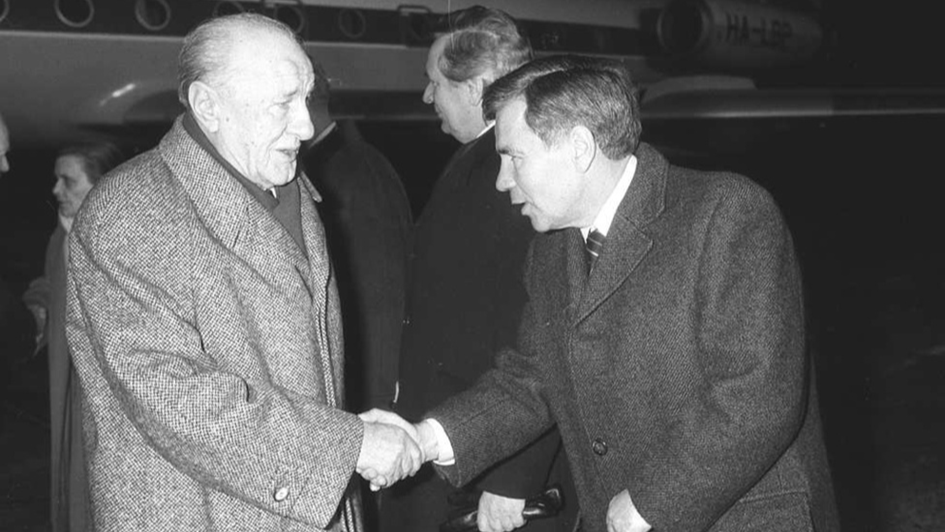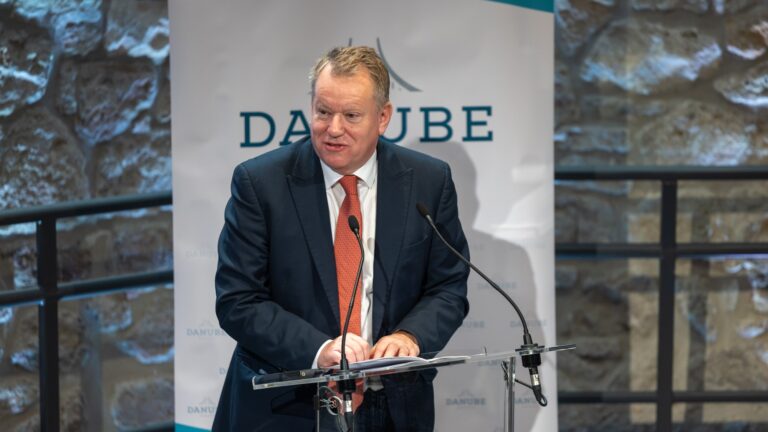In Budapest an outrageous situation persists: in the city of the heroes of ’56, the pesti srácok—the Pest lads, those brave young Hungarians who fought for freedom—a statue and even a walkway continue to commemorate a Communist politician directly involved in the post-revolutionary reprisals. This, something instituted by Mayor Gergely Karácsony’s left-liberal city administration, has recently been officially ruled illegal by the Budapest Court of Law. Yet the city authorities have not budged on the matter. The Budapest chapter of Fidesz has now proposed a correction to this injustice:
‘Restoring legality is a fundamental duty. But we owe even more! It is a moral minimum that we honour the heroes of the 1956 Revolution and Freedom Fight—not those who, standing on the opposite side of the barricades, took up arms against Hungarian freedom,’ stated Alexandra Szentkirályi, chairperson of the Budapest chapter of Fidesz, in a post on her Facebook page.
The late Gyula Horn, former Socialist foreign minister and later prime minister following the system change, used to be a pufajkás. The ‘pufajkások’ or ‘padded jacket wearers’, officially known as karhatalmisták, were the armed units established after the Hungarian Revolution of 1956 by the Kádár government to maintain order and secure Soviet-backed Communist power. They earned their name from the distinctive, thick, warm padded jackets they wore, identical to those used by the Soviet military. A Communist figure of this nature is clearly not befitting as the namesake of a walkway in Budapest.
As a matter of fact, Hungarian law explicitly forbids public spaces from bearing the names of individuals who played a part in establishing, consolidating, or perpetuating the totalitarian political regimes of the 20th century. Those who respect Horn’s accomplishments in his later years as prime minister or his contributions to the political left are entitled to their views, yet such respect cannot override the concerns regarding his actions during the Communist dictatorship. Especially not in Budapest—in the city of the pesti srácok, those young heroes who faced down the tanks of a communist dictatorship, this symbol is a desecration of their memory.

Horn joined the Hungarian Workers’ Party (MDP) in 1954, later transitioning to its successor, the Hungarian Socialist Workers’ Party (MSZMP), and participated in the suppression of the 1956 Revolution in an administrative capacity.
His Role in Suppressing the 1956 Revolution
Gyula Horn Gyula in the Revolutionary Guards regiment during the 1956 Revolution’s aftermath. This Soviet-aligned unit was tasked with protecting the newly formed Kádár government and enforcing post-revolutionary reprisals. As a member of the karhatalom (security forces), Horn is believed to have participated in arrests, raids, and, at times, violent actions. Although specific details of his activities remain limited, his role in these units led many to hold him accountable for aiding the crushing of the revolution.
Career in the Communist Party and Sustaining the Dictatorship
Horn was an important apparatchik in MSZMP and played a significant role in the party, especially in the realm of foreign affairs. From 1969 he worked in the Ministry of Foreign Affairs, eventually holding various diplomatic posts where he fostered connections among Socialist countries. These activities indirectly contributed to the stabilization and longevity of the Kádár regime. As a public official within the Communist apparatus, Horn was part of the machinery that maintained one-party rule in Hungary through the suppression of political dissent.
In recognition of his work in the reprisals following 1956, Horn Gyula was awarded the ‘For Worker-Peasant Power’ Memorial Medal.
Naming a Walkway after a Communist Apparatchik
Despite Horn’s tainted past, in 2021 the Budapest City Council under Gergely Karácsony’s administration went on to name a walkway after him in Budapest’s 13th District. When the Budapest Court of Law later deemed this decision unlawful, the city’s leaders did not initiate the necessary renaming process. Fidesz has now lost patience and they have submitted a proposal to the next General Assembly of the Budapest municipality to rename the Gyula Horn Walkway to the more fitting Pesti Srácok Walkway.
We are hopeful that at the 30 October general assembly meeting, 68 years after the revolution, suppressed in part by the actions of figures like Horn—we can end this shameful situation and honour the memory of the heroes of 1956 with dignity.
Heroes stood only on one side of the barricades, and these heroes were the pesti srácok, not Gyula Horn.
Memory Politics and the 1956 Heroes
This too is a powerful example of the ongoing ‘memory warfare’ and memory politics—one that is intense and seemingly unending. It seems, tragically, that the wounds left by the bloody 20thcentury history of Central and Eastern Europe will never fully heal. The most shocking aspect of this case is that in the very city that rose in the purest and most beautiful anti-communist fight for freedom, a street is named, 65 years later, after a figure involved in its repression.
Though our government stands firmly by its anti-communist, patriotic principles, there will always be those who champion such Communist figures, and we conservatives are duty-bound to resist them and the murderous ideologies they represent. This is the message the heroes of ’56 pass on to us today. Their memory and dignity are ours to preserve.
Glory to the heroes!
Related articles:








